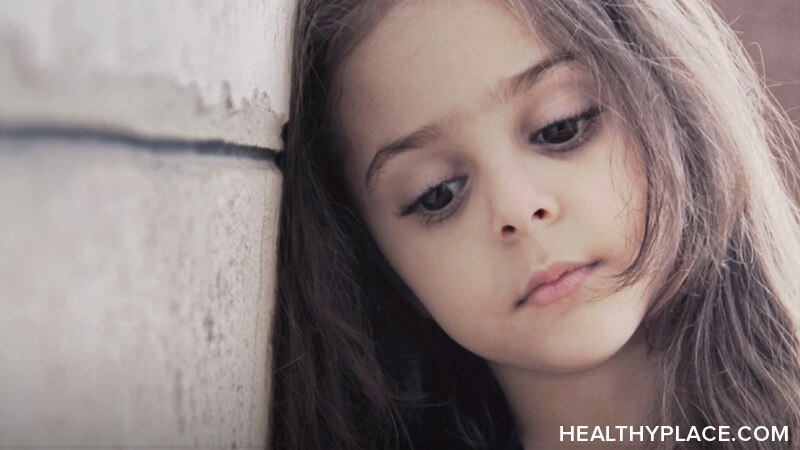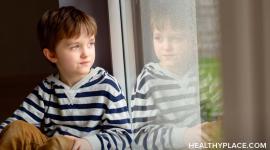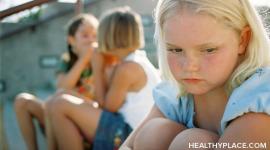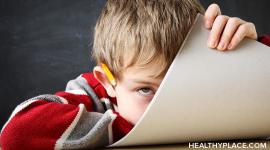How Bipolar Symptoms Affect a Child
 Bipolar symptoms in a child can be extremely severe and can be life-altering or life-threatening. It’s critical to treat any presented bipolar symptoms in children in order to positively alter the overall course of the illness. Bipolar disorder in a child left untreated, is a recipe for disaster.
Bipolar symptoms in a child can be extremely severe and can be life-altering or life-threatening. It’s critical to treat any presented bipolar symptoms in children in order to positively alter the overall course of the illness. Bipolar disorder in a child left untreated, is a recipe for disaster.
Childhood Bipolar Symptoms in the DSM
Due to lack of sufficient study and understanding, childhood bipolar disorder does not have a unique set of symptoms when compared to adult or adolescent bipolar disorder in the Diagnostic and Statistical Manual of Mental Disorders, Fifth Edition (DSM-5), which defines all mental illnesses.
This means that for a diagnosis of bipolar disorder type I, a child must experience a full manic episode plus a major depressive episode and for a diagnosis of bipolar disorder type II, a child must experience a hypomanic episode and a major depressive episode.
According to Medscape and the DSM-5, the criteria for a manic episode is as follows:
First, the individual has a distinct period of abnormally and persistently elevated, expansive, or irritable mood lasting at least one week (or any duration if hospitalization is necessary).
Second, during the period of mood disturbance, three or more of the following symptoms persisted (four if the mood is only irritable) and have been present to a significant degree:
- Inflated self-esteem to levels of grandiosity
- Decreased need for sleep
- More talkativeness than usual, often characterized by pressured speech with a sense of a need to keep talking
- Flight of ideas or a subjective feeling that thoughts are racing
- Distractibility
- Increased goal-directed activity or psychomotor agitation
- Excessive involvement in pleasurable activity that has a high potential for painful consequences (e.g., hypersexuality, excessive spending, impetuous traveling)
Third, the symptoms do not meet the criteria for a mixed episode.
Fourth, the mood disturbance is severe enough to cause marked social impairment in occupational functioning, social activities, or relationships with others. Hospitalization may be necessary to prevent harm to self or others or if psychotic features are present.
Fifth, the symptoms are not due to the direct physiologic effects of a substance or a general medical condition.
Hypomania has the same symptoms as mania; however, it is an elevated mood in which:
- No hospitalization has ever been necessary
- No state of delusional or other psychotic thinking ever coincided with the elevated mood
According to Medscape and the DSM-5, the criteria for a major depressive disorder is the following:
Major depressive episodes are characterized as, for the same two weeks, the person experiences five or more of the following symptoms, with at least one of the symptoms being either a depressed mood or characterized by a loss of pleasure or interest:
- Depressed mood
- Markedly diminished pleasure or interest in nearly all activities
- Significant weight loss or gain or significant loss or increase in appetite
- Hypersomnia or insomnia
- Psychomotor retardation or agitation
- Loss of energy or fatigue
- Feelings of worthlessness or excessive guilt
- Decreased concentration ability or marked indecisiveness
- Preoccupation with death or suicide; the patient has a plan or has attempted suicide
Symptoms cause significant impairment and distress and are not the result of substance abuse or a medical condition.
Known Differences in Bipolar Symptoms in a Child
Child bipolar disorder symptoms are harder to detect than those in adults as they may not be as clear-cut, may appear somewhat differently or may be attributed to other disorders.
For example, symptoms of bipolar disorder in children can include:
- Irritability
- Tantrums
- Physical aggression
- Other behavioral problems (such as expressions of mood disruptions)
Most children diagnosed with bipolar disorder are diagnosed with unspecified bipolar and other related disorders (previously known as bipolar not otherwise specified) rather than bipolar disorder type I or type II as they don’t match those criteria exactly.
Children with chronically irritable moods and aggression (rather than mood vacillation) can be diagnosed with disruptive mood dysregulation disorder (DMDD).
APA Reference
Tracy, N.
(2021, December 28). How Bipolar Symptoms Affect a Child, HealthyPlace. Retrieved
on 2025, November 27 from https://www.healthyplace.com/bipolar-disorder/bipolar-children/how-bipolar-symptoms-affect-a-child



